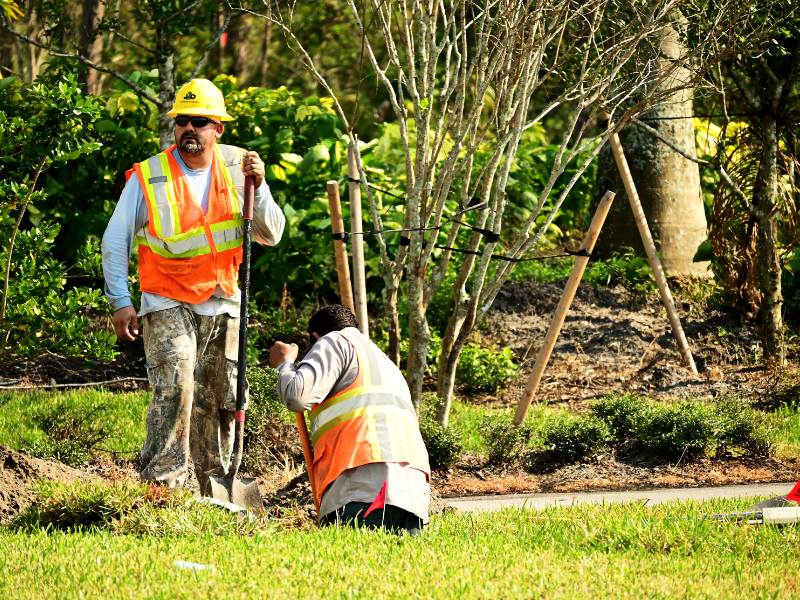Importance Of Workers’ Compensation For Carpenters
Workers’ compensation is of utmost importance for carpenters due to the inherent risks involved in their profession.
Carpenters face hazards such as falls, tool-related injuries, repetitive strain, and exposure to hazardous substances.
Having workers’ compensation coverage provides vital protection to carpenters in the event of work-related injuries or illnesses.
It ensures that they receive necessary medical treatment, wage replacement, and other benefits, while safeguarding their financial well-being.
Moreover, workers’ compensation not only supports individual carpenters but also contributes to a safer work environment, increased job satisfaction, and improved productivity within the carpentry industry as a whole.
Tip 1: Understand Workers' Compensation Laws and Requirements
Workers’ compensation laws and regulations provide essential protection and benefits to employees for work-related injuries or illnesses. Here are the key points:
- Coverage: Employers are typically required to provide insurance coverage for work-related injuries or illnesses.
- Benefits: Workers’ compensation offers medical expenses, wage replacement, disability benefits, and vocational training.
- No-Fault System: Employees don’t need to prove employer negligence to receive compensation.
- Exclusive Remedy: Workers’ compensation is often the sole legal remedy for work-related injuries or illnesses.
- Reporting and Filing Claims: Prompt reporting and proper filing of claims are necessary to access benefits.
- Compliance: Employers must comply with workers’ compensation insurance requirements to avoid penalties and legal consequences.
Understanding and adhering to workers’ compensation laws is crucial for both employers and employees to ensure adequate protection and support in the event of work-related incidents.
To stay updated on workers’ compensation laws, carpenters can use the following resources:
- State Workers’ Compensation Board or Agency: Check your state’s official website or contact the relevant authority for up-to-date information on laws and regulations.
- Industry Associations: Join professional associations or trade organizations related to carpentry for resources and newsletters that provide updates on workers’ compensation laws.
- Legal and Employment Law Resources: Consult legal resources specializing in employment law, such as online platforms, law firms, or legal aid organizations, for information and publications on workers’ compensation laws.
- Insurance Providers: Talk to your workers’ compensation insurance provider for guidance and resources on changes to laws and regulations.
- Workshops and Seminars: Attend events focused on workers’ compensation or occupational health and safety to learn from industry experts and legal professionals about the latest laws and regulations.
By actively seeking out and utilizing these resources, carpenters can stay informed, ensure compliance, and protect their rights as employees.
Regularly checking official websites, subscribing to newsletters, or participating in professional development opportunities can help in this regard.
Tip 2: Choose a Reputable Insurance Provider
A. Choose a reputable insurance provider for carpentry workers compensation needs, ensuring reliable coverage and peace of mind in case of accidents or injuries.
B. Consider key factors when choosing an insurance company: track record in carpentry workers comp, financial stability, claims handling efficiency, customer service, and tailored support.
C. Find reputable insurance providers through recommendations, online research, and specialized insurance brokers.
Tip 3: Accurately Classify Employees and Job Tasks
Accurately classifying employees and job tasks is crucial in carpentry to comply with regulations and ensure appropriate coverage.
Different carpentry job classifications include framing carpenters, finish carpenters, and more.
Consulting with professionals ensures accurate classification and compliance with workers’ compensation regulations.
Tip 4: Maintain a Safe Work Environment
A. Ensure carpenters’ well-being and productivity by prioritizing safety in the work environment. Create a positive culture that values health and safety, reducing the risk of accidents or injuries.
B. Implementing safety measures is crucial for carpenters to minimize hazards. Use proper PPE like hard hats, gloves, and goggles.
Follow ergonomic lifting techniques to prevent strains. Maintain a clean workspace to reduce trips, slips, and falls.
Regularly inspect equipment, practice safe tool handling, and ensure proper maintenance for accident prevention.
C. Regular training and awareness programs are vital to keep carpenters’ safety knowledge up to date.
Comprehensive training should cover safety protocols, hazard recognition, and emergency procedures.
Ongoing safety reminders, toolbox talks, and meetings reinforce safe practices. Promote a culture of safety through open communication, reporting near misses, and empowering carpenters to contribute to a safe work environment.
By prioritizing safety, implementing practical measures, and fostering continuous training and awareness, carpenters can create a work environment that ensures their well-being and promotes a culture of safety throughout the industry.
Promptly reporting workplace injuries or incidents is vital to ensure timely medical attention, address underlying causes, and establish a record for workers’ compensation claims.
Notify employers promptly and follow their reporting protocols. Consult professionals for guidance on efficient claims handling and documentation.
Taking these steps safeguards rights, facilitates proper care, and streamlines the claims process for carpenters.
Tip 6: Communicate with Employees about Workers Compensation
Open and transparent communication with employees about workers’ compensation is essential for fostering trust and a positive work environment.
Educating employees about their rights and benefits enhances awareness, encourages proactive reporting, and demonstrates employer commitment to their well-being.
To effectively communicate, provide clear information, use various channels, encourage questions, and tailor communication to employees’ needs.
Prioritizing communication promotes understanding, cooperation, and employee well-being.
Tip 7: Regularly Review and Update Workers' Compensation Policies
Regularly reviewing and updating workers’ compensation policies is crucial to address changes in the workplace environment and industry regulations.
Evaluate coverage limits to ensure adequacy in addressing potential risks and liabilities. Seek professional advice from specialized insurance agents or brokers to navigate policy terms and identify areas for improvement.
Taking these steps helps maintain robust policies that protect carpenters’ financial well-being and provide necessary coverage for work-related incidents or injuries.
Implementing key tips for workers’ compensation is crucial for carpenters.
Prioritize safety, choose reputable providers, classify employees accurately, report incidents promptly, and communicate rights to employees.
Regularly review policies and protect workers and your business with adequate coverage.




